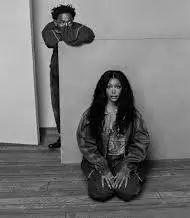by Jill Warnke
On October 27, globally renowned American singer-songwriter Taylor Swift released 1989 (Taylor’s Version).
This is a new, re-recorded version of her original 1989 studio album, which was released the same day in 2014. It is the fourth album Swift has re-recorded, succeeding Fearless, Red, and Speak Now.
Before the album’s anticipated release, Taylor Swift posted a teaser on Instagram, writing, “This is my most FAVORITE re-record I’ve ever done because the five from The Vault tracks are so insane. I can’t believe they were ever left behind” (Pitchfork).
Vault songs, as Swift calls them, are songs that were written along with the original album but were not selected to be on it. The vault tracks of the 1989 album are “‘Slut!’”, “Say Don’t Go,” “Now That We Don’t Talk,” “Suburban Legend,” and “Is It Over Now?”
The first vault song on the album is “‘Slut!’”, which personally I found to be the best song out of all the vault tracks. Swift is one of the most popular musicians of our time and is unfortunately no stranger to the criticisms and derogatory comments towards women, specifically women in the music industry. Through this song, she artistically reclaims this offensive term, which provides insight to her audience on the struggles she has faced as a celebrity in the music industry.
The lyricism in this song is very satisfying and Swift’s way of description creates vivid imagery, as seen when she describes colors such as “flamingo pink, Sunrise Boulevard”, “aquamarine” swimming pool, and “tangerine, neon light”. It is also known that she uses bright colors as a way of expressing love, like she does in her songs, “Out of the Woods” and “Red”.
The music was also appealing and my favorite part had to be the use of chimes because they added a light, glittery feeling throughout the song. It played a big factor in my view of the background music. The use of drums in the music is something that is seen in all of the vault tracks, making for a fairly generic Taylor Swift addition, however, the chimes add that bit of needed personality. It suited the slow and steady tempo of the song. The harmonious liquidity of this song makes it my favorite of the vault tracks.
The next song I took a look at was “Say Don’t Go”, which tells a tale of heartbreak and describes a romantic relationship where the protagonist is losing their partner and is in a particular period of emotional turmoil and heartbreak.
I found the lyrics in this song are very straightforward and a little less poetic than the previous one with the exception of her metaphors. Swift often uses the metaphor of murder to accompany her songs of love and heartbreak, comparing that sense of grief to a physical manifestation of someone killing her in one way or another. While this does create a unique way of conveying emotions of hurt and healing, this specific kind of device is used throughout many of her songs. It’s a typical theme that has become a bit too common and takes away from the potential of her lyricism.
Personally, what I enjoyed the most about this track was the echoing put on the chorus when she sings “(say) say (don’t) don’t (go) go.” I think the choice to incorporate echoes into her songs added to the composition of her music in a positive way. Overall, the beat was pretty generic, so I liked this one a little less than “‘Slut!’” There was also a nice voice harmony in the background, though it was also very subtle and I only noticed it when listening to the instrumental version.
After that, I played “Now That We Don’t Talk”. This song talks about change in a relationship in which she and her partner used to be close, but aren’t anymore. The protagonist sings about how she wonders about her ex-partner, but won’t ever know, as they no longer interact. Similar to other vault tracks, “Now That We Don’t Talk” is also rumored to be about her previous relationship with Harry Styles.
Like “Say Don’t Go,” the beat emulates a typical pop song, as it was quite repetitive. But I did enjoy how the chorus was sung, as she added many unique sound effects to make the song more interesting, like the addition of the cowbell. At the same time, Swift uses the biblical allusion, “You part the crowd like the Red Sea,” in verse 1, which I found slightly unnecessary. The biblical elements make sense in a song like “Would’ve, Could’ve, Should’ve”, as Swift puts a lot of emphasis on religion and uses it as a recurring symbol of innocence. However, “Now That We Don’t Talk” doesn’t ever bring up another line like that again and it just doesn’t contribute anything to the song.
The lyrics in this track are straightforward and pretty surface-level, which isn’t bad. However, I know there are people who go in expecting a lot more than what is given because certain songs have lyrics with less depth and meaning than others. Personally, I didn’t find the lyrics very interesting, but I did enjoy the chorus, which had a very tuneful rhythm. Again, I liked the echoes Swift adds to the background track and as generic as it is, the beat is still catchy and can get stuck in your head once you listen to it a few times.
Following that was “Suburban Legends”, which is about a past relationship. The two people mentioned in the song had long since gone their separate ways, paving their individual paths to greatness, but the song expresses how profound of an impact that other person had on the protagonist’s life in the time they spent together.
In the beginning of the song, Swift references her partner’s infidelity through the lyric, “You had people who called you on unmarked numbers / In my peripheral vision”. She proceeds to say how she was enamored with this person, and they were “so magnetic”. She describes them as “Flush with the currency of cool”, essentially describing this person as a generally cool, well-liked person. However, she juxtaposes this with the lyric “I was always turning out my empty pockets”, using a metaphor to state how she felt she wasn’t as cool or liked as her partner. Swift proceeds to use countless other metaphors and similes in this song, which can make it very confusing on the first listen.
Despite this being one of her more lyrically complex songs, after a few listens, the general message of the song becomes more clear. This song, however, is not as great when compared to the other vault tracks, as the general beat and lyric pacing are fairly typical. Personally, I appreciated the addition of the synths as well as the guitar. Swift uses a variety of unique sounds, especially one in her outro that make this song more interesting to listen to.
Lastly, I listened to the song, “Is It Over Now”. I think this was one of the tracks I liked the best from the 1989 Vault (second to “‘Slut!’”). The lyrics were also complex and made allusions to various events in Swift’s life, such as her past relationship with Harry Styles. Throughout the song, she makes these references through various anecdotes such as “When you lost control / red blood, white snow”, which references her song “Out Of The Woods” (which is also about Harry Styles). She does it again through the lyric “blue dress on a boat”, which references a paparazzi photo taken after their presumed breakup.
Regarding the instrumentals, the intro was fairly unique in comparison to the other vault tracks. The music and instrumentals were unique, but easily outdone by the other songs. However, I loved the pre-chorus and the chorus. They were fun to listen to and the upbeat tempo fit the vibe this song intended to create.
Overall, I find there are many commonalities between the vault tracks of the 1989 (Taylor’s Version) album. These vault tracks are the epitome of a “Taylor Swift song”. They’re classic, feel-good pop songs that you can dance and sing to. Like a lot of her music, the lyrics are more basic on the first listen but the meanings become more apparent if you look for it. Needless to say, they fit great on the 1989 album and are a fun addition to her overall discography.









Be First to Comment